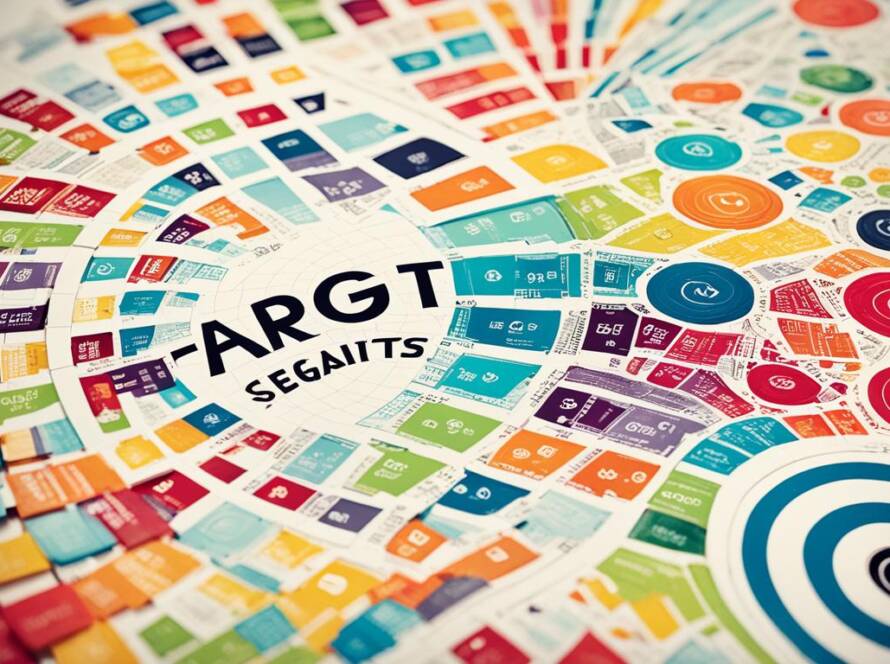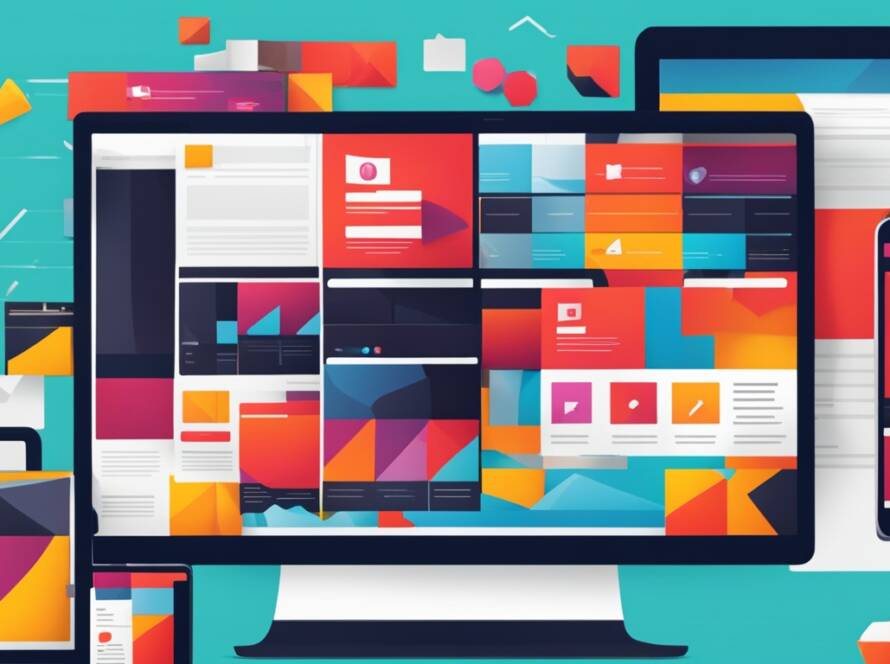Creating personas and customer journeys starts with understanding your target audience well. Personas are like fictional characters that show different parts of your potential customers. By using lots of data, you can make detailed profiles that show what customers need and want. It’s important to use both kinds of data in making these profiles1.
This approach helps you feel more connected to your customers. It also makes your business focus more on what customers like. Experts in this area were picked from many community contributions. They used methods like surveys, interviews, and listening to social media1.

Key Takeaways
- A good rule of thumb is to create between three to five personas that cover the most important segments of your audience1.
- User research methods to create personas include surveys, interviews, focus groups, observations, analytics, and social media listening1.
- 80% of customers consider their experience with a company to be as important as its products2.
- AI-enabled “living personas” fed with historical and real-time data are recommended for ongoing research1.
- Ensuring stakeholder involvement is crucial for accurate persona creation and internal advocacy1.
Creating Personas for Effective Customer Journeys
Understanding and using customer personas is key to making customer journeys effective. These detailed profiles help tailor experiences and align efforts. They are based on deep research into typical customers.
Understanding the Concept of Customer Personas
Customer personas are like fictional characters made from thorough research. They show how different users might interact with a service or brand. To make them, you need to mix *demographic behaviours*, *persona creation*, and *customer journey stages*. About 5-30 interviews per role can give you enough data to spot important patterns3.
The Importance of Customer Personas in Business Strategy
Customer personas are crucial for a good *business strategy*. They guide *customer-centric practices*, helping companies understand what customers want and need4. They help many departments, from sales to HR, create a unified *customer experience* approach4.
Steps to Creating Accurate Customer Personas
To make accurate personas, follow these steps:
- Defining Purpose: Clearly state what you want to achieve with your personas.
- Audience Research: Use *behavioural data* from CRM systems, *customer surveys*, and *marketing analytics software*5.
- Data Synthesis: Combine different data to make full profiles.
- Profile Creation: Create engaging stories with details on demographics, personal traits, and customer stages4.
- Validation: Keep improving personas by matching them with real-world results5.
- Application: Use personas to shape *marketing funnel* plans and map out customer journeys4.
Using Data and Research for Persona Building
Good *persona building* needs a strong *research-based approach*. Use a mix of data, like market research, surveys, interviews, and social insights4. For analysing behaviour, use scales of 8-12, and for comparing behaviour, use scales of 5-93. Having one team manage personas helps keep them consistent and effective5.
Ensuring Stakeholder Buy-In for Persona Development
Getting *stakeholder buy-in* is key for developing personas. It means getting different views in the company to make sure the personas really capture what customers need. This makes personas useful and actionable. When data changes, update personas and customer journey maps to keep them working together5.
Our focus on *target audience identification* and *customer segmentation* makes our personas and maps practical tools. They drive *customer centricity* across the whole company.
Utilising Customer Journey Mapping to Enhance Customer Experience
Using customer journey mapping helps us understand the many ways customers interact with our brand. It shows us what customers need, what they expect, and where they might face problems6. This approach is key to improving how we serve customers and keeping them coming back7.
Customer journey maps give a clear picture of all the touchpoints with our brand. They let us spot and fix issues before they become big problems6. Tools like decision trees and neural networks help us predict what customers might do next. This lets us offer services that really meet their needs7. By acting on this data, we can make our service better and keep customers loyal7.
Tools like Delighted help us understand what customers think by tracking scores like NPS, CSAT, and CES6. Looking closely at these scores helps us make our strategies work better. This makes sure customers have a smooth experience and are happier overall.
- Net Promoter Score (NPS)
- Customer Satisfaction Score (CSAT)
- Customer Effort Score (CES)
By making journey maps over time, we can change our plans to meet customer needs better6. These maps use models to predict how customers might act in different situations. This helps us offer experiences that feel personal and rewarding7. So, customers stay loyal because they find our service consistent and satisfying.
Conclusion
Creating personas and mapping customer journeys shows a deep, data-driven way to connect with customers. By using details like age, gender, and job, we get to know what our customers want and need8. These personas help product teams focus, making the user experience better for everyone8. Making personas involves collecting data, writing descriptions, and creating scenarios, and getting the team on board9.
Customer journey mapping adds a visual way to see how customers feel at every step. It helps us make better plans to keep customers engaged and interested. With tools like the Web AI Engine, we can keep learning and adapting to what customers want. This keeps companies close to their customers and relevant.
To make these strategies work, we mix different types of data to make real, engaging personas. This tech approach lets us guess what customers might need and offer solutions they like. Our full strategy leads to better customer relationships, loyalty, and success for the business.
Source Links
- https://www.linkedin.com/advice/0/how-do-you-create-customer-personas-journey
- https://blog.hubspot.com/service/customer-journey-map
- https://uxpressia.com/blog/how-to-create-persona-guide-examples
- https://beyondthearc.com/blog/2014/customer-experience/improve-customer-experience-with-personas-and-journey-maps
- https://www.techtarget.com/searchcustomerexperience/tip/5-tips-for-creating-customer-journey-maps-from-buyer-personas
- https://delighted.com/blog/guide-to-customer-journey-mapping
- https://www.globalresponse.com/blog/customer-journey-mapping-enhance-service/
- https://marchbranding.com/buzz/user-personas-uses-and-benefits/
- https://www.interaction-design.org/literature/article/personas-why-and-how-you-should-use-them


